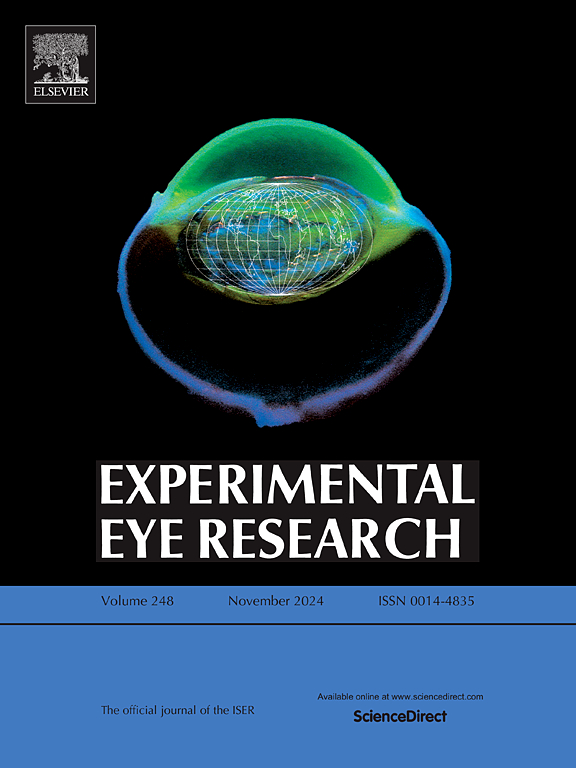局部应用帽负载水凝胶抑制角膜新生血管
IF 3
2区 医学
Q1 OPHTHALMOLOGY
引用次数: 0
摘要
角膜新生血管(CNV)是视力损害的重要危险因素。目前CNV治疗的有效性和副作用,如类固醇和抗血管内皮生长因子药物,仍存在争议。此外,局部药物的生物利用度通常受到眼泪、眨眼和角膜解剖结构的阻碍。因此,寻找一种新的治疗策略非常重要。本研究旨在研究新型治疗剂capmatinib (Cap)治疗CNV的功能,capmatinib是一种高度选择性的MET抑制剂,在血管生成中起重要作用。在本研究中,我们首先研究了HGF/c-MET轴在角膜碱烧伤模型中CNV的作用和Cap的治疗效果。我们合成了一种含有Cap的吉尼平交联明胶基水凝胶(Cap- gel)。我们观察到Cap- gel的治疗效果比单独使用Cap更显著,并且炎症浸润和纤维化减轻。第14天,Cap-Gel组对角膜新生血管的抑制作用最显著,新生血管长度最短(0.48±0.13 mm), CNV面积最小(3.77±0.78 mm2),临床评价评分最低(3.33±0.52)。综上所述,我们的研究结果表明Cap-Gel可能是一种治疗CNV的有希望的候选药物。本文章由计算机程序翻译,如有差异,请以英文原文为准。
Topical application of Cap-loaded hydrogels inhibits corneal neovascularization
Corneal neovascularization (CNV) is a significant risk factor for visual impairment. The efficiency and side effects of current CNV treatments, such as steroids and antivascular endothelial growth factor agents, are still debated. In addition, the bioavailability of topical drugs is usually hindered by tears, blinking, and the corneal anatomy. Therefore, finding a new therapeutic strategy is important. This study aimed to examine the function of the new therapeutic agent capmatinib (Cap), a highly selective inhibitor of MET that plays an important role in angiogenesis, in treating CNV. In this study, we first investigated the role of the HGF/c-MET axis in CNV and the therapeutic effect of Cap in a corneal alkali burn model. We synthesised a genipin-crosslinked gelatine-based hydrogel containing Cap (Cap-Gel). We observed a more significant therapeutic effect with the Cap-Gel than with Cap alone, as well as the alleviation of inflammatory infiltration and fibrosis. On day 14, the Cap-Gel group showed the most significant inhibition of corneal neovascularization, with the shortest neovessel length (0.48 ± 0.13 mm), smallest CNV area (3.77 ± 0.78 mm2), and lowest clinical assessment score (3.33 ± 0.52). Taken together, our results suggest that Cap-Gel could be a promising drug candidate for treating CNV.
求助全文
通过发布文献求助,成功后即可免费获取论文全文。
去求助
来源期刊

Experimental eye research
医学-眼科学
CiteScore
6.80
自引率
5.90%
发文量
323
审稿时长
66 days
期刊介绍:
The primary goal of Experimental Eye Research is to publish original research papers on all aspects of experimental biology of the eye and ocular tissues that seek to define the mechanisms of normal function and/or disease. Studies of ocular tissues that encompass the disciplines of cell biology, developmental biology, genetics, molecular biology, physiology, biochemistry, biophysics, immunology or microbiology are most welcomed. Manuscripts that are purely clinical or in a surgical area of ophthalmology are not appropriate for submission to Experimental Eye Research and if received will be returned without review.
 求助内容:
求助内容: 应助结果提醒方式:
应助结果提醒方式:


